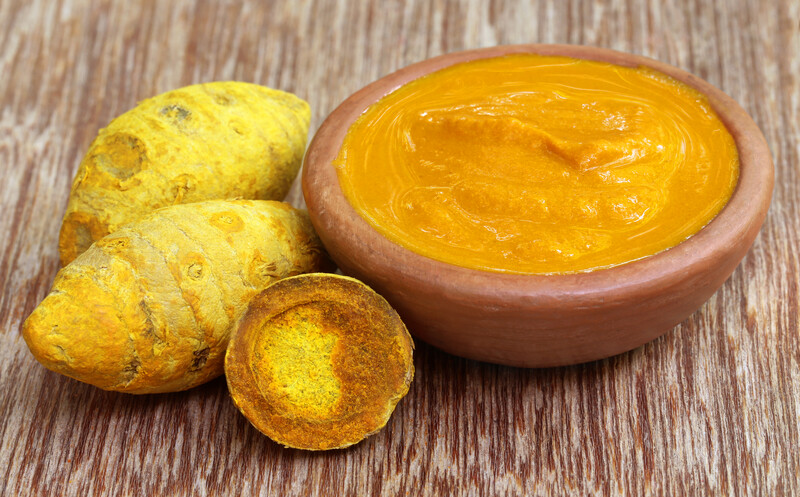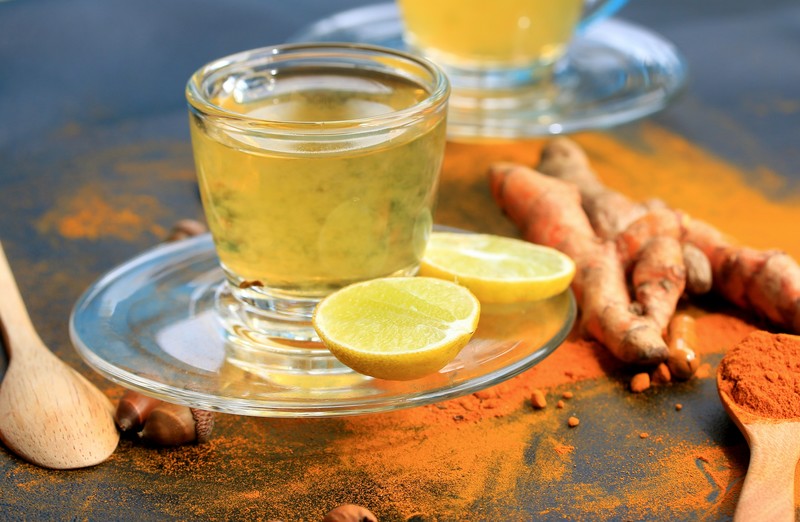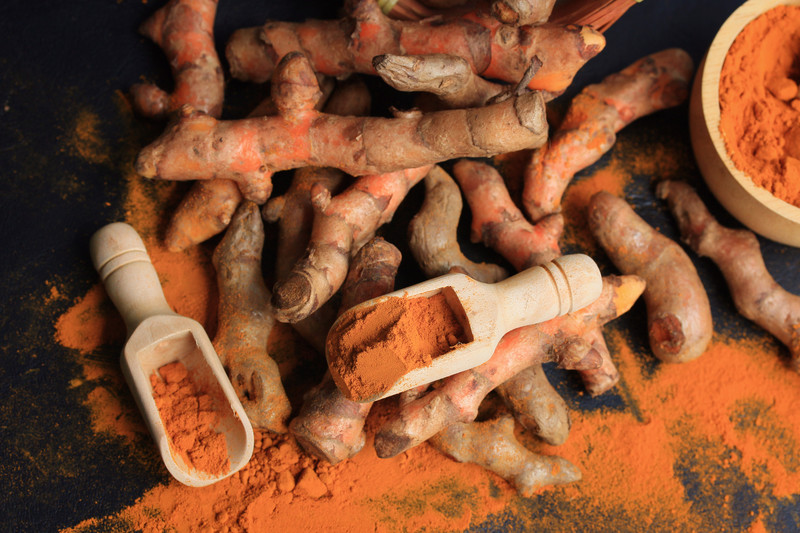Turmeric, a traditional Indian spice, is the dried root of the plant Curcuma longa. It is related to and similar in size to ginger. Both turmeric and ginger are from Zingiberaceae family and are rhizomes. Rhizome is a stem which is later modified into a root.
In the last few years, turmeric has made its way onto the shelves of all major grocery stores and into the mainstream spice scene. Its popularity comes from the fact that turmeric carries lots of medicinal properties – curing the flu, sore throats, stomach pains, aching muscles, joint pain etc.
Turmeric’s history goes back over 3000 years, to the heyday of Ayurveda. Ayurvedic medicine (“Ayurveda” for short) is one of the world’s oldest holistic healing systems. It was developed more than 3,500 years ago in India. It’s based on the belief that health and wellness depend on a delicate balance between the mind, body, and spirit. Its main goal is to promote good health, not fight disease.
In Ayurvedic cooking, turmeric is the star of the show. Turmeric is often prescribed by Ayurvedic practitioners to support the blood, liver, joints, immune system and digestive tract. In India, about 80 per cent of the rural population depends on traditional Ayurvedic medicine.

Turmeric is chemically diverse: so far approximately 235 compounds have been identified including polyphenolic, terpenes and volatile oils; a strong argument for using whole-spectrum turmeric as opposed to isolated compounds. Curcumin is just one compound that gives the yellow colour to turmeric. It was first isolated two centuries ago and has been extensively studied in the last century. Early on in the clinical research into turmeric all of the activities credited to it were associated with curcumin. However, more recent studies have identified that curcumin-free turmeric components possess also numerous biological activities. This comes as no surprise to traditional medicine; turmeric, known as jiang huang in China, has long been used effectively as a water decoction or ‘tea’ in Traditional Chinese Medicine (TCM).

The top 10 health benefits of turmeric and curcumin are, in short:
- Turmeric contains Bioactive Compounds with powerful medicinal properties; these compounds are called curcuminoids, the most important of which is curcumin. Curcumin is the main active ingredient in turmeric. It has powerful anti-inflammatory effects and is a very strong antioxidant.
- Curcumin Is a Natural Anti-Inflammatory compound; Curcumin can suppress many molecules known to play major roles in inflammation. Chronic inflammation contributes to several common Western diseases.
- Turmeric can dramatically increase the Antioxidant Capacity of the body; it neutralizes free radicals on its own but also stimulates your body’s own antioxidant enzymes.
- Curcumin boosts levels of the brain hormone BDNF, which increases the growth of new neurons and fights various degenerative processes in your brain.
- Curcumin has beneficial effects on several factors known to play a role in Heart Disease. It improves the function of the endothelium and is a potent anti-inflammatory agent and antioxidant.
- Curcumin leads to several changes on the molecular level that may help prevent and perhaps even treat Cancer.
- Curcumin can cross the blood-brain barrier and has been shown to lead to various improvements in the pathological process of Alzheimer’s disease.
- Arthritis is a common disorder characterized by joint inflammation. Many studies show that curcumin can help treat symptoms of arthritis and is in some cases more effective than anti-inflammatory drugs.
- Studies show that Curcumin has good benefits against Depression.
- Curcumin may help delay Aging and fight age-related Chronic Diseases.

What is it used for exactly?
Well, the list is long…but I will present it here (with thanks to the website WebMD):
Turmeric is used for arthritis, heartburn (dyspepsia), joint pain, stomach pain, Crohn’s disease and ulcerative colitis, bypass surgery, hemorrhage, diarrhea, intestinal gas, stomach bloating, loss of appetite, jaundice, liver problems, Helicobacter pylori (H. pylori) infection, stomach ulcers, irritable bowel syndrome (IBS), gallbladder disorders, high cholesterol, a skin condition called lichen planus, skin inflammation from radiation treatment, and fatigue. It is also used as an enema for people with inflammatory bowel disease.
It is also used for headaches, bronchitis, colds, lung infections, hay fever, fibromyalgia, leprosy, fever, menstrual problems, itchy skin, and recovery after surgery, and cancers. Other uses include depression, Alzheimer’s disease, swelling in the middle layer of the eye (anterior uveitis), diabetes, water retention, worms, and an autoimmune disease called systemic lupus erythematosus (SLE), tuberculosis, urinary bladder inflammation, and kidney problems.
One last note. To maximize the benefits of turmeric, combine it with fat, such as coconut oil. Also, the compound piperine found in black pepper enhances curcumin absorption, making it more readily available to be used by your body. When combined, curcumin and piperine tend to have a greater effect on inflammation, digestion, reducing pain and fighting cancer.
